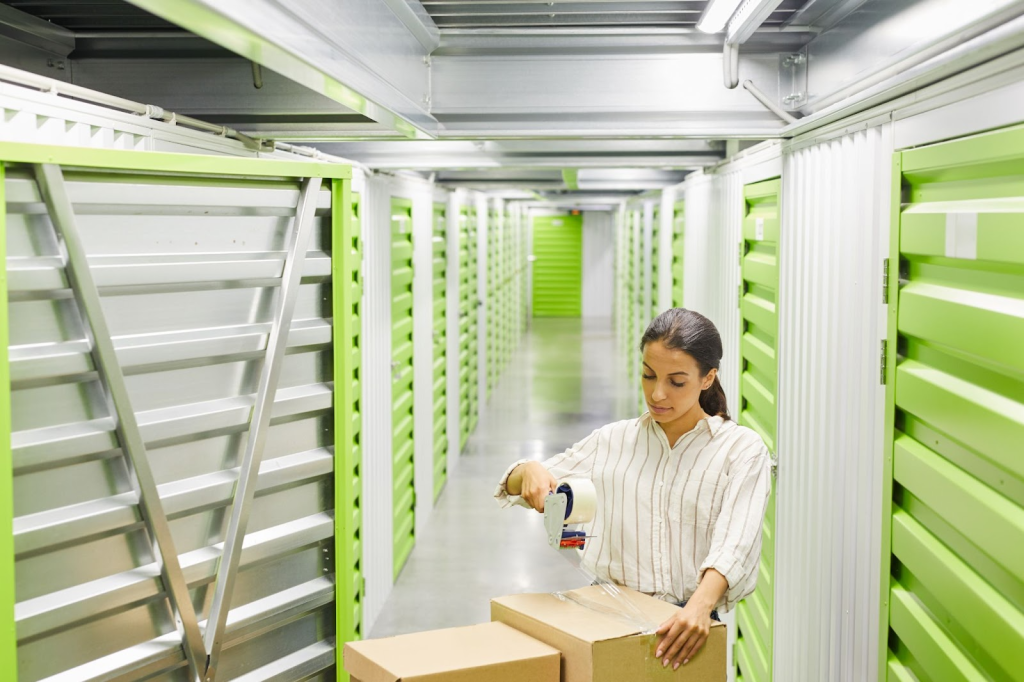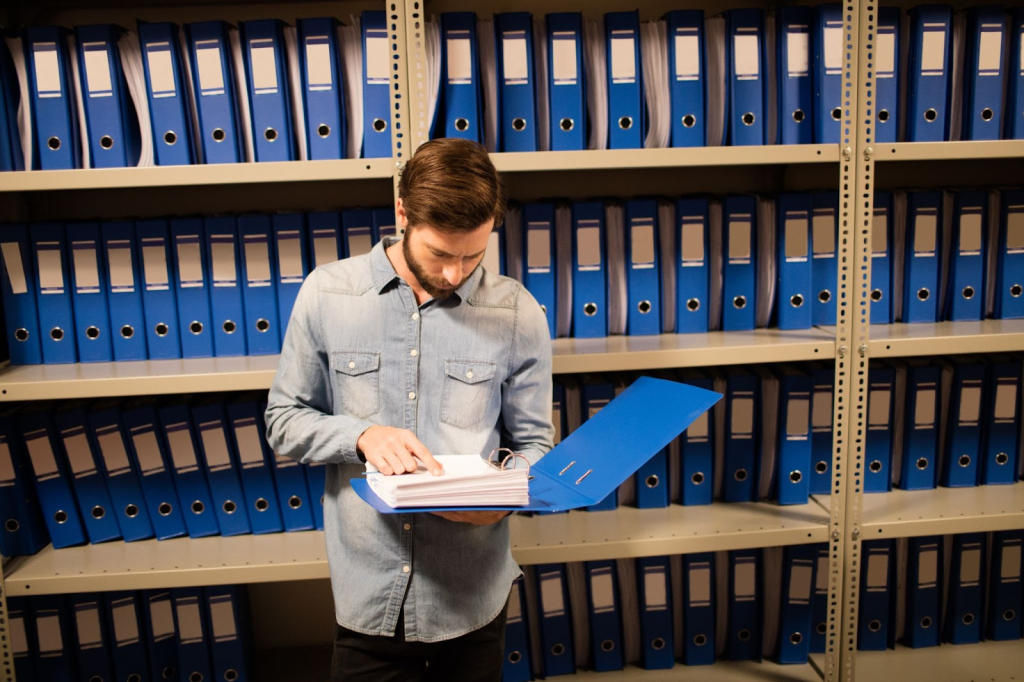
What Items Require Storage With Temperature Control?
Some belongings can’t handle extreme heat, cold, or humidity. They’re too valuable, fragile, or sensitive to leave in a regular storage unit. It becomes even more urgent if you’re storing items long-term or live in a climate with seasonal shifts. Controlled storage offers a reliable solution that keeps your items in top condition without risk of deterioration.
Storage With Temperature Control Explained
Temperature-controlled storage is more than just a convenience; it’s a safeguard. It protects sensitive items from extreme heat, cold, and moisture damage. Standard storage units fluctuate with the weather, which can lead to long-term damage. Storage with temperature control maintains steady conditions throughout the year.
What Makes Climate-Controlled Storage Different
Storage with temperature control protects your items from weather-related damage. These units stay between 55°F and 80°F year-round, regardless of outdoor temperatures. Most facilities also include ventilation or humidity control systems, which prevent mold and condensation. Compared to traditional storage, these units provide a much more stable environment. That matters if you store electronics, paper, wood, fabrics, or artwork. Even padded or covered items can break down over time without that control.
Why Property Owners Prefer Temperature Control
If you’re a homeowner, landlord, or business owner, your items reflect personal or financial value. Furniture, documents, and devices often represent long-term investments. Temperature-controlled units help avoid problems like cracking, warping, or mold in non-insulated spaces. These risks are higher in areas with humidity, freezing winters, or scorching summers. This kind of storage reduces replacement costs for property owners with seasonal tenants or fluctuating inventory. It also keeps your assets ready to use at any time.
What Belongings Need Climate-Controlled Storage
Not everything stores well in a standard unit. Certain items react badly to heat, cold, and moisture, even over short periods. Without proper care, they lose value, function, or integrity. Below are the most common types of items that demand a temperature-controlled space.
Electronics and Appliances
Electronics aren’t built to survive in unstable environments. Devices and appliances can suffer internal damage when exposed to high humidity or fluctuating temperatures. Even a short period of improper storage can ruin performance. That’s why these items need climate-regulated spaces.
Electronics
Electronics, such as televisions, computers, game consoles, and audio systems, are susceptible to the effects of climate change. Heat causes internal parts to expand, and cold can crack soldering points. Humidity presents another problem, as moisture buildup can cause corrosion and short circuits. Condensation forms when temperatures swing, especially inside sealed components. Once damage occurs, these items cease to function and lose all resale value. That’s why climate control isn’t optional when storing electronics.
Appliances
Large and small appliances, including refrigerators, ovens, washers, dryers, and microwaves, also need climate protection during storage. These machines have rubber seals, metal parts, and sensitive wiring that deteriorate in extreme heat or cold. Cold air can cause plastic components to become brittle, while heat can lead to internal overheating or insulation failure. Even if they aren’t plugged in, environmental exposure weakens their performance. Keeping appliances in a temperature-controlled unit extends their life.
Furniture Types That Can Warp or Crack
Wood, fabric, or leather furniture can degrade quickly in the wrong conditions. Heat, moisture, and dry air all impact the materials used in household furnishings. Without the proper protection, even short-term storage causes visible damage. Climate-controlled storage keeps furniture usable and looking sharp.

Wood Furniture
Natural wood reacts to moisture and temperature changes. When the air is damp, wood absorbs it and swells. When the air is dry, it shrinks. This cycle leads to cracking, splitting, and loose joints. Veneers may peel, and finishes lose their shine or color. Storing wood in a climate-controlled unit avoids these outcomes entirely.
Upholstered and Leather Furniture
Soft furniture is even more prone to damage in storage. Mold, mildew, and fabric discoloration can start in just a few weeks in a humid unit. Leather dries out and cracks in dry air, or softens and stretches in warm air. Foam cushions flatten or break down in unstable environments. If pests find their way in, they’ll target natural fabrics. Climate control adds a layer of defense against all these risks.
Antique and Sentimental Pieces
Older furniture or pieces passed down through generations often include delicate craftsmanship. Glues, fabrics, and finishes used decades ago weren’t designed to handle modern environmental stress. Without stable storage, they degrade quickly. Once that damage occurs, restoration is costly or impossible. Climate control isn’t optional for property owners storing heirlooms or collectors’ pieces. It’s the only safe option.
Documents, Books, and Photos
Paper-based items degrade quickly when exposed to humidity, heat, or cold. From books to records, their value and readability can fade over time. Storage with temperature control prevents mold, brittleness, and ink loss and extends the life of personal or business documents.
Books and Important Documents
Paper doesn’t do well in heat or humidity. It becomes brittle, curls at the edges, or fades. Ink smudges or lightens when stored in damp spaces. Mold also forms on paper surfaces if the airflow is poor. Over time, even stored books can stick together or lose value. Temperature-controlled storage keeps your files, books, and blueprints intact and legible.
Photographs
Photos are made with chemical layers and specialty paper. These layers break down quickly under stress. Heat distorts colors, and moisture separates photo paper. Albums buckle and stick together in non-controlled storage. Temperature-controlled conditions are necessary if you’re storing family photos or printed media. Once a photo is damaged, there’s no bringing it back.
Business Inventory and Office Gear
For business property owners, storage isn’t just about space but about preservation. Inventory, office equipment, and documents are sensitive to changes in climate. Without proper conditions, stock becomes unsellable and equipment fails. Controlled storage keeps operations protected and ready.
Retail Products Sensitive to Heat and Moisture
Products like cosmetics, candles, supplements, or anything with a shelf life react badly to extreme storage conditions. Seals break down, packaging warps, and formulas can spoil. Labels fade, which creates compliance issues. Even inventory that doesn’t expire can smell musty or feel sticky if humidity levels rise. Businesses lose money when stored products become unsellable. Climate control keeps inventory safe, usable, and ready for shipment.

Office Equipment and Paper Files
Office printers, copiers, and hard drives contain heat-sensitive parts. Moisture creates internal rust and damages circuits. Paper files grow moldy or brittle in humid storage units. Once mold sets in, it spreads quickly across boxes. Storing records, backups, or extra hardware in controlled units avoids all that. It also ensures business continuity during a move or office repair.
Clothing, Textiles, and Accessories
Storing clothing for the off-season or during a move is easy. However, fabrics can weaken, stain, or mold when stored in unstable air. Proper storage makes a difference, whether for vintage pieces or designer clothes. Temperature and humidity control protect fabrics and stitching alike.
Fabric
Clothing is often one of the first items ruined in self-storage. Moisture soaks into fabric and causes musty smells, discoloration, or mildew. Synthetic fabrics stretch or shrink, while natural ones weaken. Zippers rust, elastic breaks down, and dyes bleed. Even clean clothes can become unwearable. Controlled storage keeps air balanced so fabrics last.
Seasonal Wardrobes and Designer Items
Winter coats, formalwear, or vintage pieces often have sentimental and retail value. Storing them in unstable environments leads to damage that dry cleaning can’t reverse. If you’re rotating seasonal wardrobes, choose climate-controlled storage to avoid deterioration. The same applies to shoes, hats, and accessories. Without that protection, moisture buildup can ruin even the highest-quality items. Stable climate conditions are essential for long-term storage.
Art Supplies, Instruments, and Creative Tools
Artwork and musical instruments have more than monetary value—they represent time, creativity, and identity. However, they are fragile and easily damaged by heat, moisture, and dryness. Once ruined, they are costly or impossible to replace. That’s why artists and collectors prefer climate-controlled storage.
Art Materials
Paintings, framed prints, drawings, and mixed-media pieces don’t respond well to hot or humid air. Canvas stretches or shrinks. Paper warps or molds. Paint can crack, and adhesives soften. Climate-controlled storage protects both value and appearance for galleries, collectors, or artists. Art storage isn’t just about space but about preservation.
Musical Instruments
Guitars, violins, drums, and woodwind instruments are often made from natural materials. Wood expands and contracts with the weather. Strings corrode, finishes fade, and glued joints separate. Even padded cases don’t block out moisture or temperature changes. Instruments need consistency to retain sound and structure. Controlled environments offer the only reliable way to store them safely.
Perishable and Consumable Goods
Not all perishable items need refrigeration, but they still need consistency. Temperature changes affect food texture, flavor, and safety. Poor storage reduces wine and sealed goods’ quality and shelf life. Climate-controlled units offer the environment these items need.
Wines
Wine is one of the most sensitive items you can store. Just a few degrees too hot or too cold can ruin its flavor. Fluctuating conditions cause corks to expand or leak, introducing air and spoiling the product. Humidity also causes labels to peel, affecting resale value. Storing wine requires a calm, stable, and dark environment—precisely what temperature-controlled units provide.
Pantry Staples
Canned goods, sealed spices, and dried ingredients can spoil without refrigeration, but also suffer in hot, damp air. Rust, mold, and chemical separation are common. Even sealed food absorbs surrounding moisture. Climate control is critical for storing large food shipments, charity stock, or seasonal goods. It’s not just about keeping them dry but about keeping them safe.
When Storage With Temperature Control Is Essential
Climate-controlled storage isn’t necessary for everything, but it is the only safe option in certain situations. Weather, item value, and storage length are all factors. In regions with seasonal extremes, traditional storage becomes a liability. Knowing when to use temperature control prevents long-term losses.
Local Weather and Seasonal Conditions Matter
Climate-controlled storage becomes essential in regions with seasonal extremes. Whether you’re facing humid summers or bitter winters, your storage space will mimic those conditions without regulation. Condensation inside containers causes damage without you noticing; shifting heat and cold lead to expansion and cracking in nearly every material. If your city has a wide temperature range, these units offer the safest environment. It’s long-term insurance against climate stress.
Longer Storage Periods Multiply the Risk
Long-term exposure is different even if items look fine after a few weeks. Materials break down slowly and often silently. Mold spreads before it becomes visible. Metal rusts beneath the surface. Paper yellows and warps. The longer something stays in storage, the more value climate control brings.
Protect What Matters With Temperature-Controlled Storage
If something matters enough to store, it matters enough to store well. Moisture, heat, and time can quietly ruin even well-packed belongings. The cost of prevention is far less than the cost of replacement. That makes working with a trusted temperature-controlled storage provider the more intelligent choice. They offer the right environment, the proper safeguards, and the right space for what matters most. Don’t settle for storage that leaves your valuables at risk.
Your items aren’t average, and your storage strategy shouldn’t be either. The Express Restoration blog offers insights on what works.
